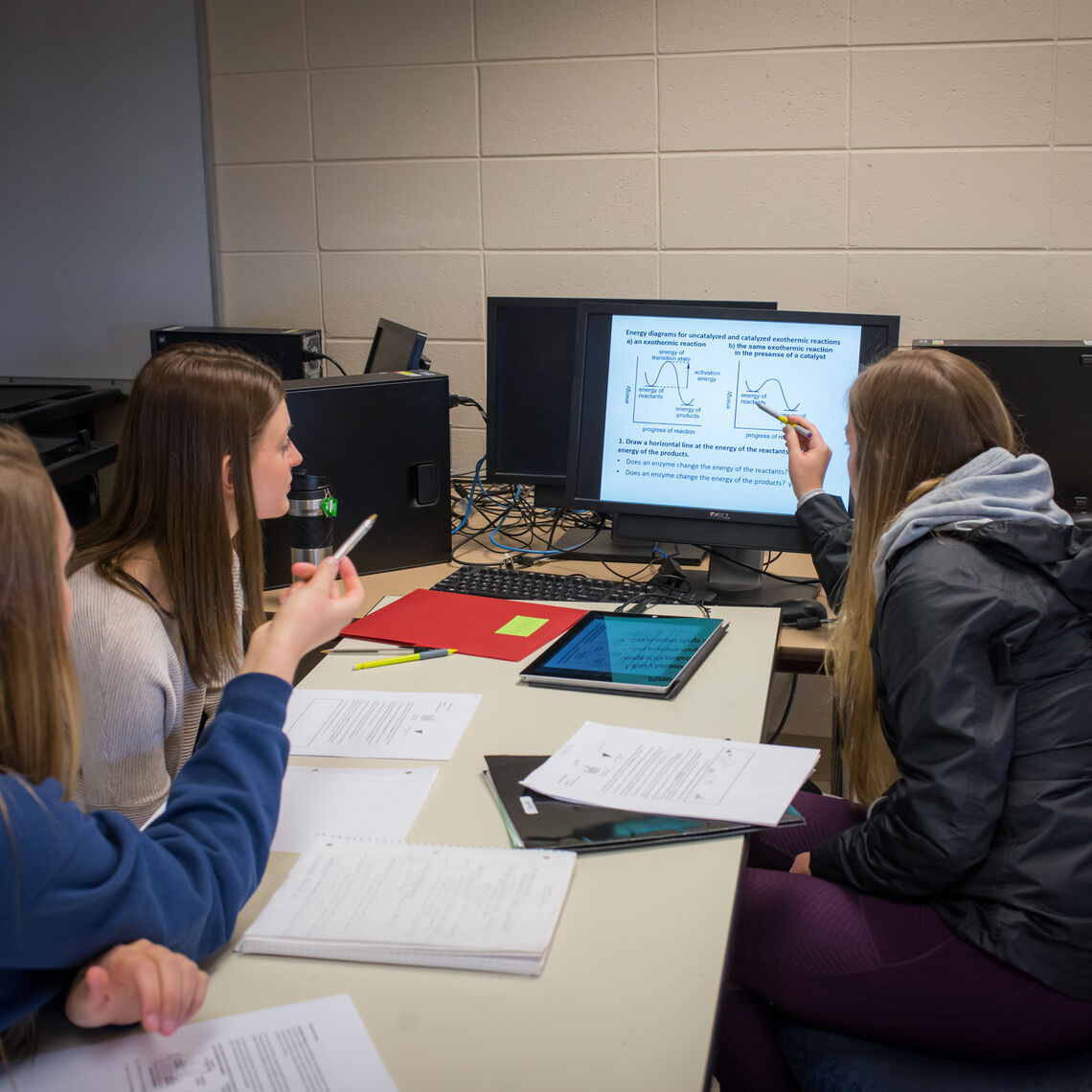I like to walk the halls in academic science buildings while classes are in session.
I stop outside each classroom door and eavesdrop. What I hear tells me a lot about whether students are engaged in learning.
In most instances, I hear a definitive single voice over a silent background. Intonation rises and falls, one sentence following another, as an argument is parsed or application analyzed by the professor.
Occasionally, it’s different. I hear a hum as I approach and then a hubbub. A peek into this room shows students talking with each other in small clusters, gesturing and pointing to some object in front of them.
I don’t know what they are looking at, but I know that they are engaged intellectually in trying to figure something out. Thoughts become words, and words expressed receive a response. Thinking is happening here.
In the first classroom, I could hear only the thinking of the professor. The students, a few with pen in hand, were looking forward, or down, or at the walls, showing me no evidence that they were engaged with their professor’s well-constructed argument. One can hope that they were attentive to the presentation but we know that information retention for learners in a traditional lecture environment is extremely inefficient and that significant scientific misconceptions are not dislodged.
In the last several decades, we have learned that individuals come to understand the world, and the specialized knowledge of the various disciplines, by a cognitive construction process. Experiences and information are encountered, patterns of details and ideas coalesce, building personal models that guide our beliefs, perceptions, and behaviors. The process begins with the child in the crib and never stops.
Construction implies time and effort. Construction implies seeking and assembling pieces. Construction implies decision-making and problem-solving. Construction is often frustrating in process but satisfying in completion, as anyone who has done a home project will attest.
We don’t accomplish this alone. Other individuals, peers and mentors, contribute their own perspectives, melding those with our own. Even the most gifted thinkers hone their understanding of an idea through listening to how others attempt to understand the same idea.
If you are an instructor, you are a specialized mentor helping novices build an understanding of how your discipline makes sense of the world. You are an architect and a construction manager. You have to establish goals, create a plan, provide resources, assess progress, and adjust to roadblocks. You don’t just provide a plan to your student crew and then ignore them until the building is completed. You need to see construction as it happens. For the classroom, you need to make the thinking visible.
In the first classroom I visited, there was little visible evidence that students were thinking about what the instructor wanted them to think about. In the second classroom, I could see the construction happening as student work teams communicated out loud about the tasks at hand.
My classroom used to be like the first one. I liked laying out the details, doing all the talking, making all the decisions, comfortable in the sense that I was giving students the best of my thinking. I do it differently now. I now work to get the best of their thinking. POGIL allows me to accomplish this.
Chris Bauer, University of New Hampshire

The Sound of Learning
Friday September 9th, 2020